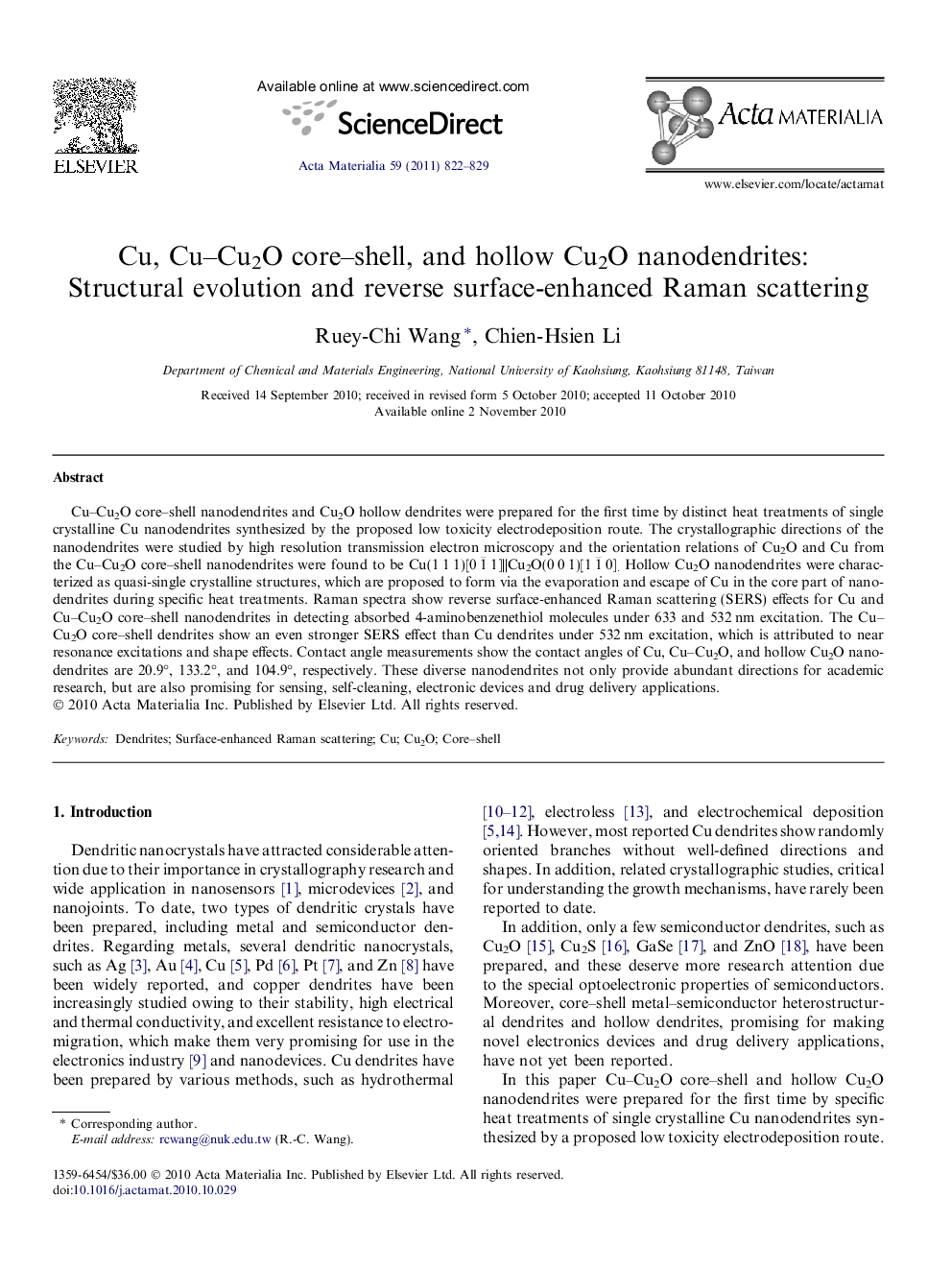| کد مقاله | کد نشریه | سال انتشار | مقاله انگلیسی | نسخه تمام متن |
|---|---|---|---|---|
| 1447644 | 988650 | 2011 | 8 صفحه PDF | دانلود رایگان |

Cu–Cu2O core–shell nanodendrites and Cu2O hollow dendrites were prepared for the first time by distinct heat treatments of single crystalline Cu nanodendrites synthesized by the proposed low toxicity electrodeposition route. The crystallographic directions of the nanodendrites were studied by high resolution transmission electron microscopy and the orientation relations of Cu2O and Cu from the Cu–Cu2O core–shell nanodendrites were found to be Cu(1 1 1)[0 1¯ 1]||Cu2O(0 0 1)[1 1¯ 0]. Hollow Cu2O nanodendrites were characterized as quasi-single crystalline structures, which are proposed to form via the evaporation and escape of Cu in the core part of nanodendrites during specific heat treatments. Raman spectra show reverse surface-enhanced Raman scattering (SERS) effects for Cu and Cu–Cu2O core–shell nanodendrites in detecting absorbed 4-aminobenzenethiol molecules under 633 and 532 nm excitation. The Cu–Cu2O core–shell dendrites show an even stronger SERS effect than Cu dendrites under 532 nm excitation, which is attributed to near resonance excitations and shape effects. Contact angle measurements show the contact angles of Cu, Cu–Cu2O, and hollow Cu2O nanodendrites are 20.9°, 133.2°, and 104.9°, respectively. These diverse nanodendrites not only provide abundant directions for academic research, but are also promising for sensing, self-cleaning, electronic devices and drug delivery applications.
Journal: Acta Materialia - Volume 59, Issue 2, January 2011, Pages 822–829